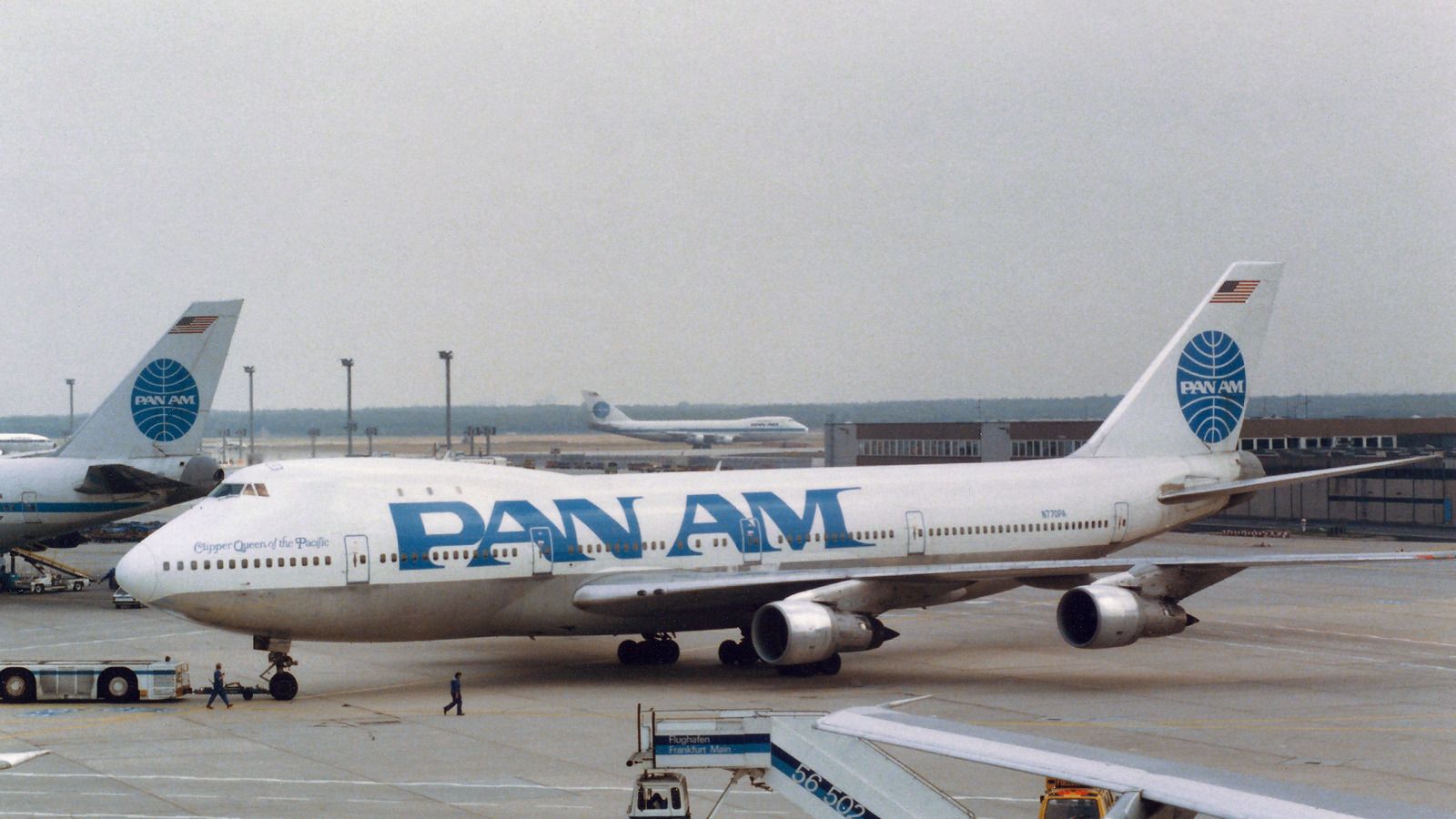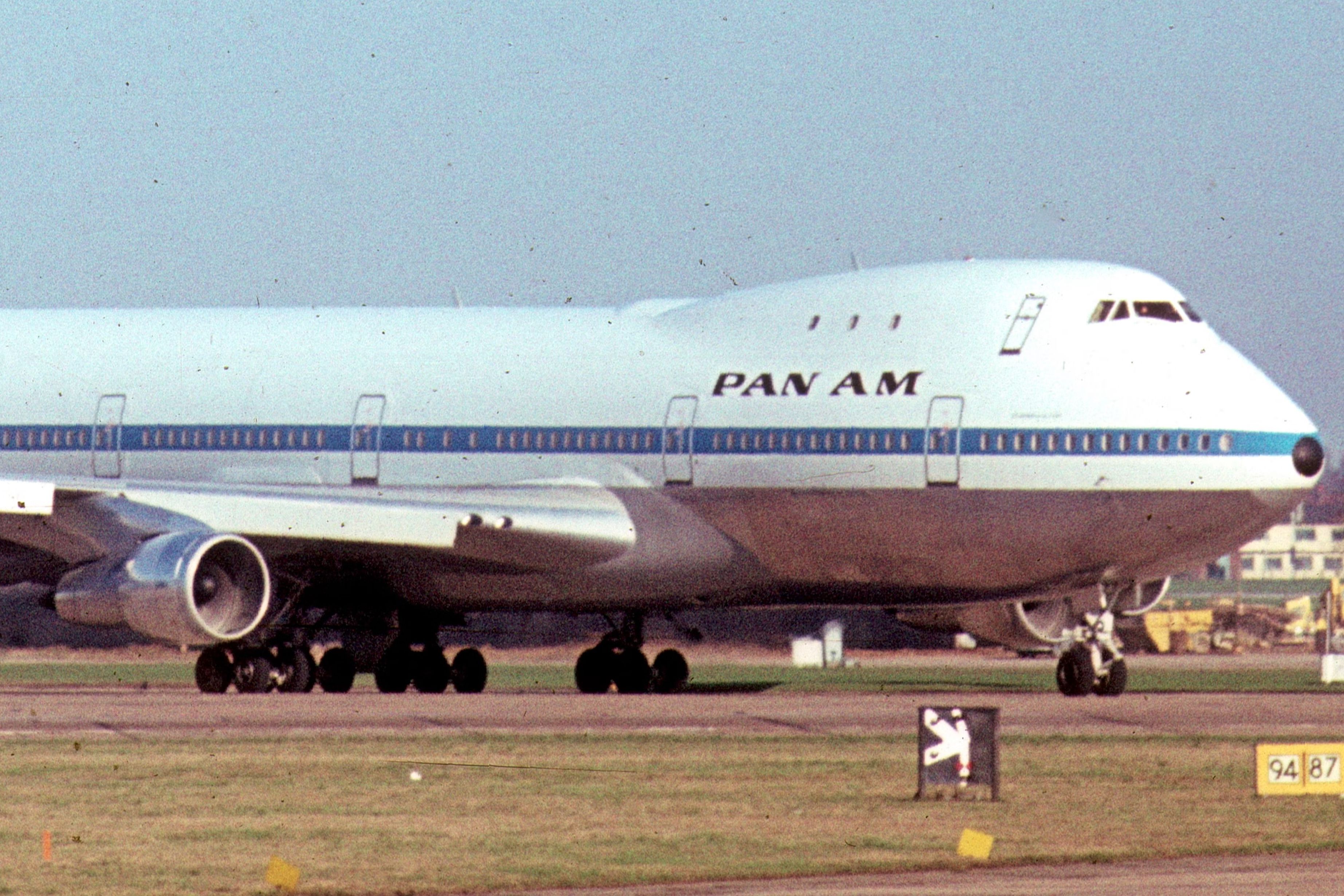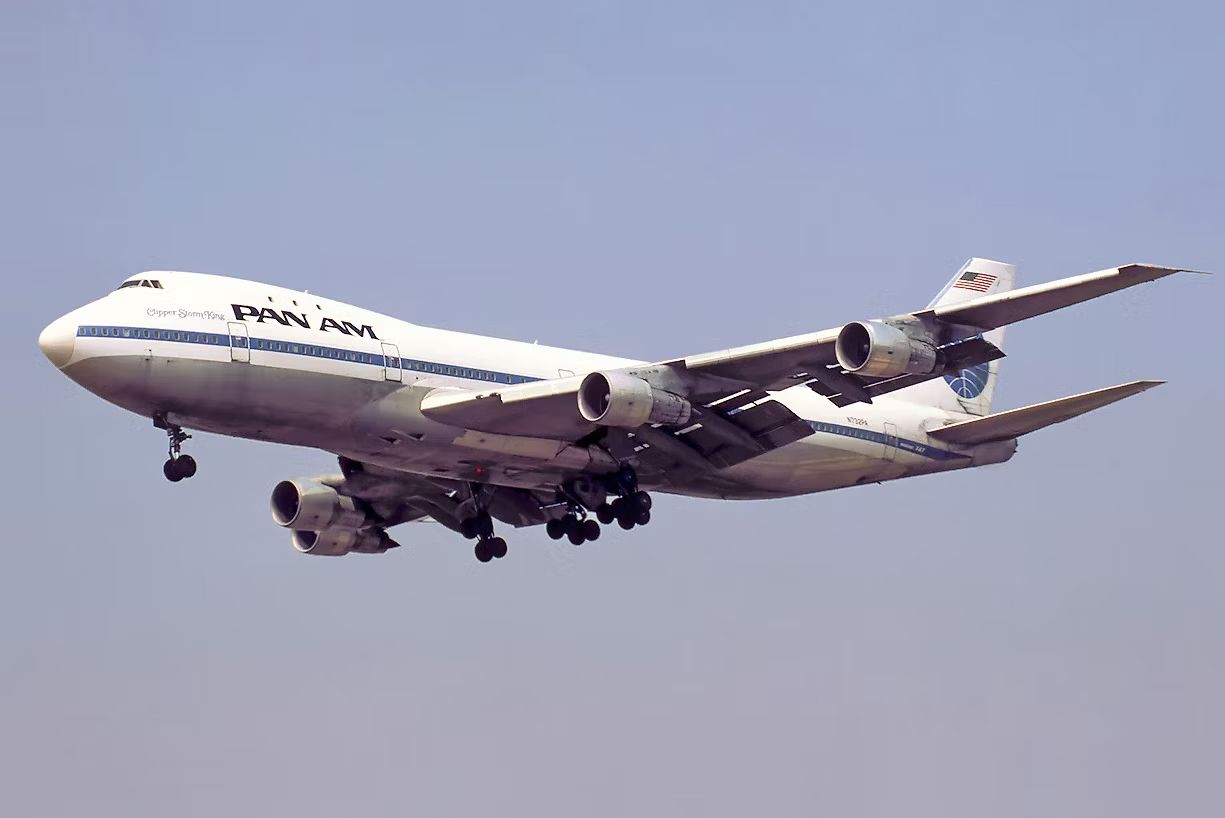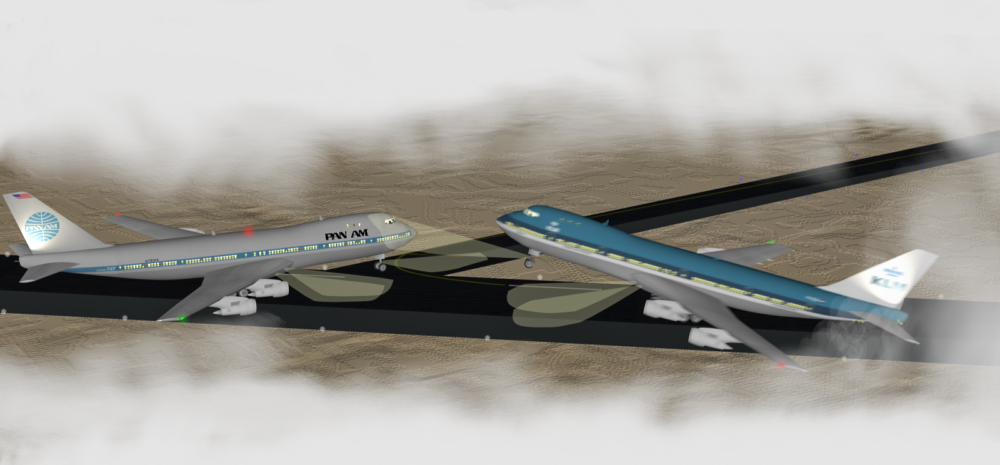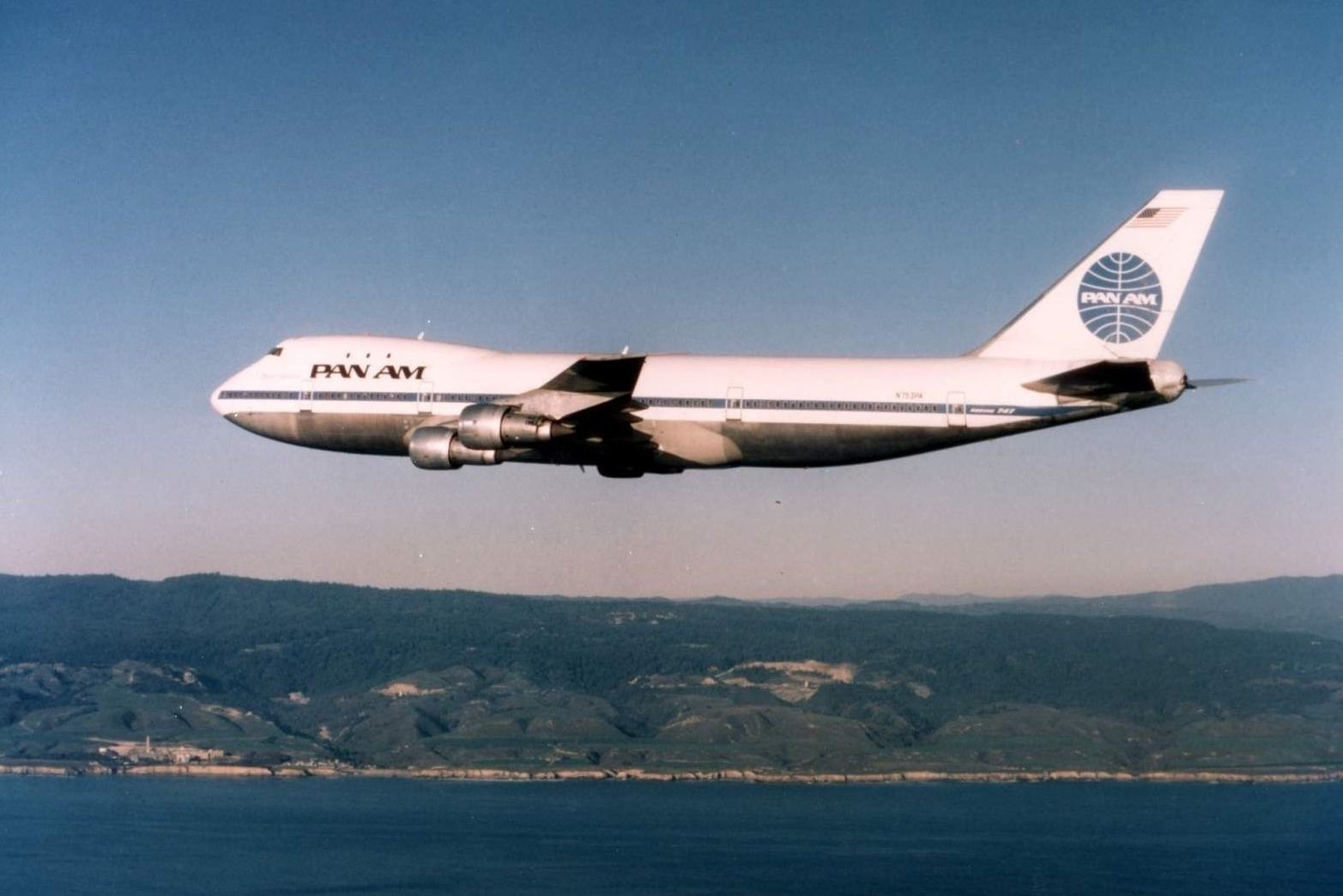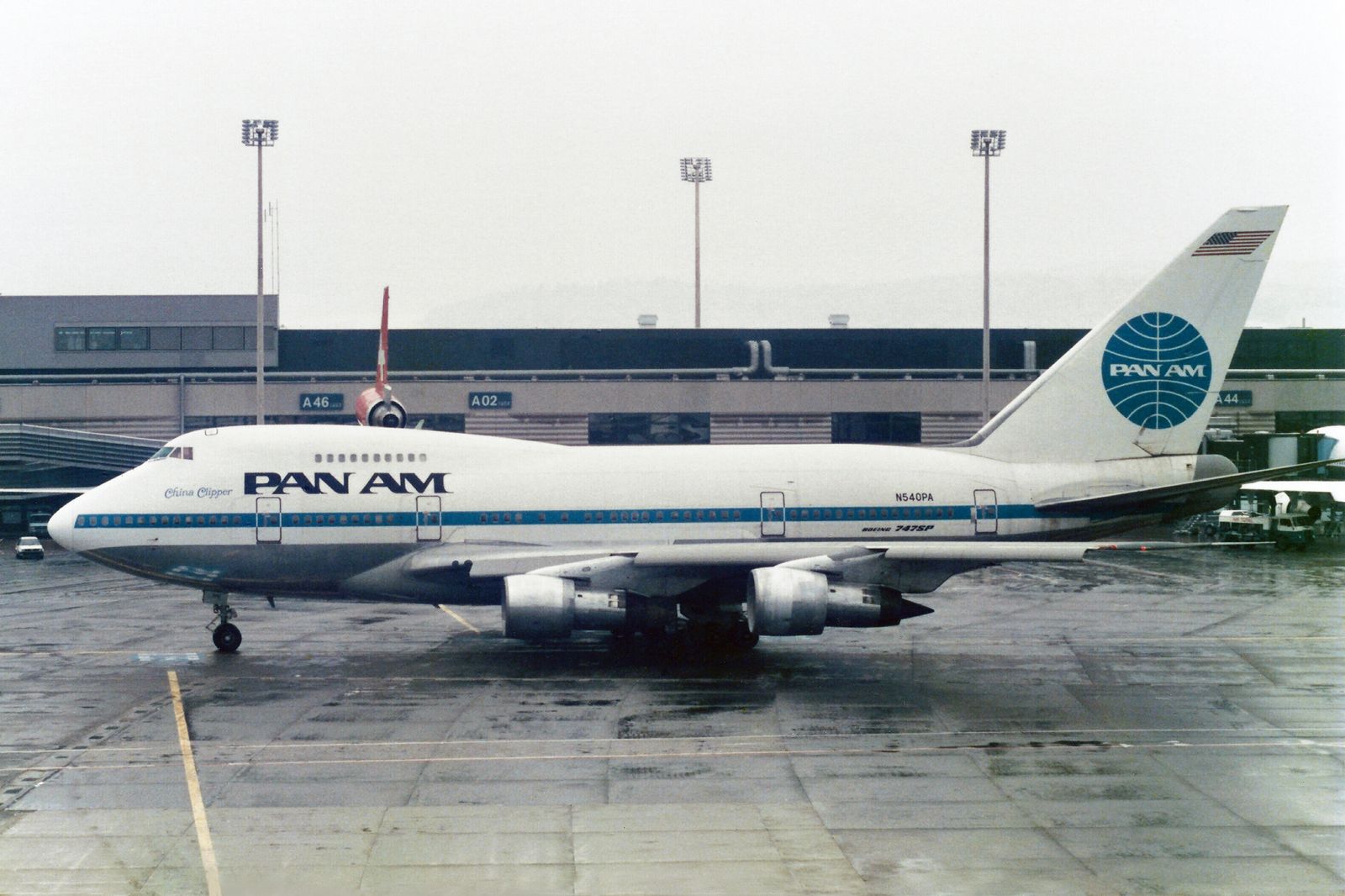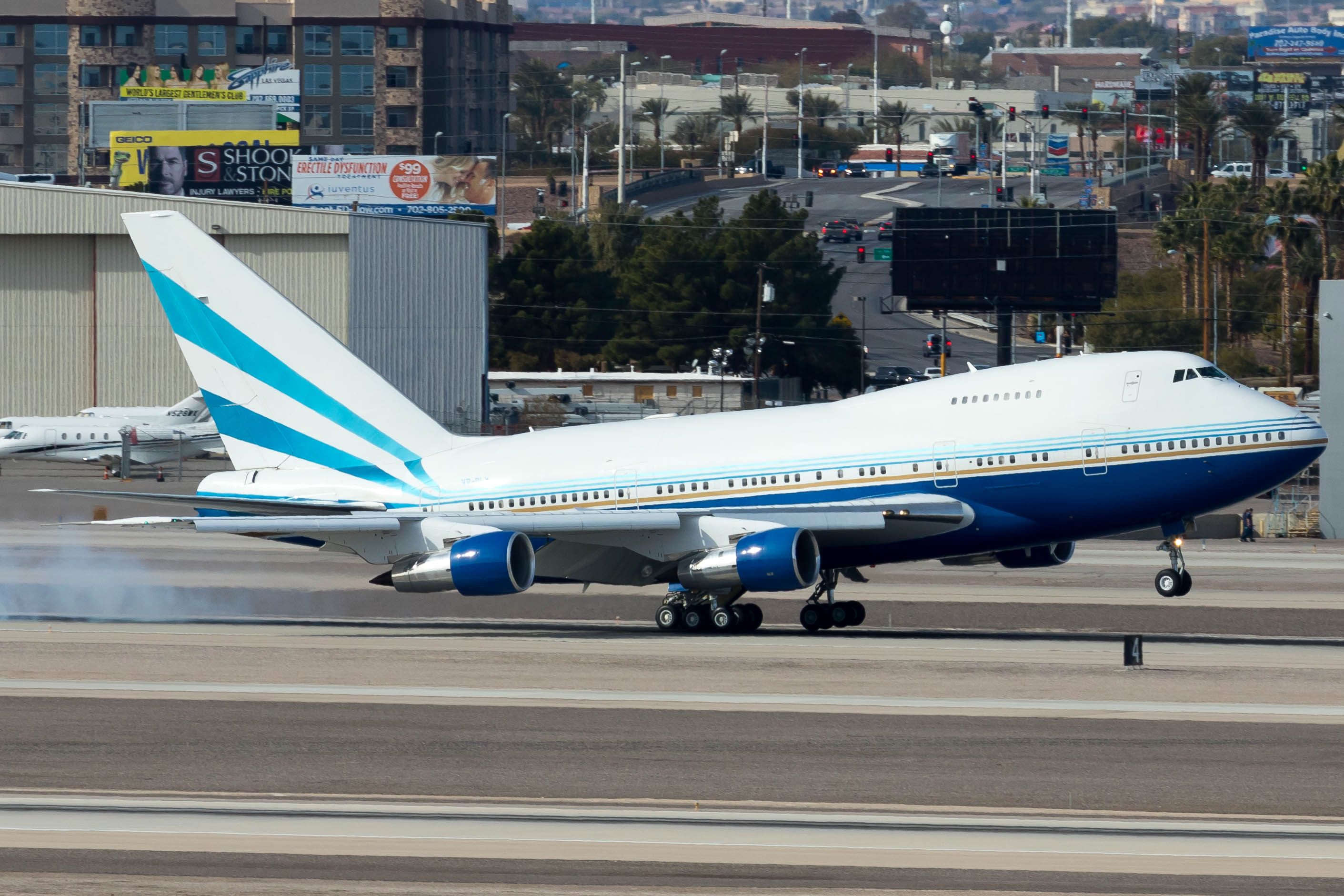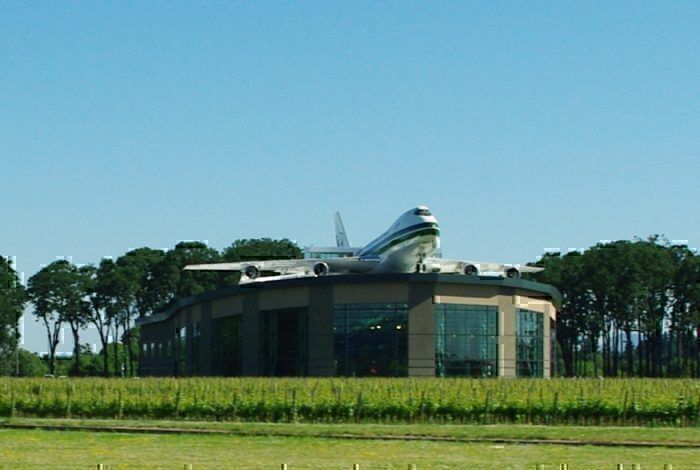Summary
- Pan Am was the launch customer and operator for the Boeing 747, operating over 65 examples of the aircraft.
- Several ex-Pan Am Boeing 747s have been preserved in museums and aviation sites, while others have been scrapped or broken up for parts.
- Pan Am's Boeing 747s faced terrorist attacks, including hijackings and bombings, making them subject to increased risks during difficult times.
The launch customer of the Queen of the Skies, the Boeing 747, Pan American, had a long history with jumbo jets. With the airline's initial interest in and collaboration on what was the most ambitious design at the time, Boeing brought the idea of a twin-decker jet to fruition.
Throughout the airline's existence, it operated over 65 examples of the Boeing 747. After the airline ceased operations in December 1991, most of the remaining jets were transferred to other airlines. But, where are the ex-Pan Am Boeing 747s today? While most have been scrapped or broken up for parts, a handful have been preserved in museums and aviation sites.
Pan Am and the Boeing 747
Pan Am was the first airline to place an order for the Boeing 747, ordering more than $500m worth of aircraft in 1966. According to Northwestern University, the airline, helmed by the innovative and well-known Juan Trippe, ordered 25 747s, coming out to about $20 million each. It became the launch customer and operator for the type, operating its first revenue flight in January 1970 on the prestigious New York to London-Heathrow route.
In fact, Pan Am worked very closely on the development of the 747 with Boeing. In an interview with Air and Space Magazine, lead designer Joe Sutter said, if it wasn’t for the foresight and input of their CEO, Juan Trippe,
“…the 747 wouldn’t have happened. Then you wonder, what would the industry look like today without it?”
At the time, Pan Am had a massive presence worldwide and was known as an American face abroad. The Boeing 747 was designed to transport many passengers over a long distance, which was perfect for Pan Am.
Between 1969 and 1991, Pan Am would receive 65 Boeing 747s, according to Planespotters.net. Of these, 44 were 747-100s, 10 were 747-200s, and 11 were 747SPs.
After about 20 years of operation, in 1991, Pan Am was already under bankruptcy protection, and it closed its doors for good in December of that year. The iconic airline faced a host of problems after the airline industry was deregulated and faced a host of competition. Without a strong domestic network, it was difficult for Pan Am to survive. Filling up a 747 is no easy task, let alone with plenty of competition and a limited domestic connecting network.
Times of terrorism
Pan Am's Boeing 747s also operated in difficult times. Tensions in the Middle East, the ongoing Vietnam War, and other global issues meant the world was in the grip of terrorism risks, and aircraft became a prime target. Pan Am’s 747s had more than their fair share of these problems, including some of the most notorious incidents in history.
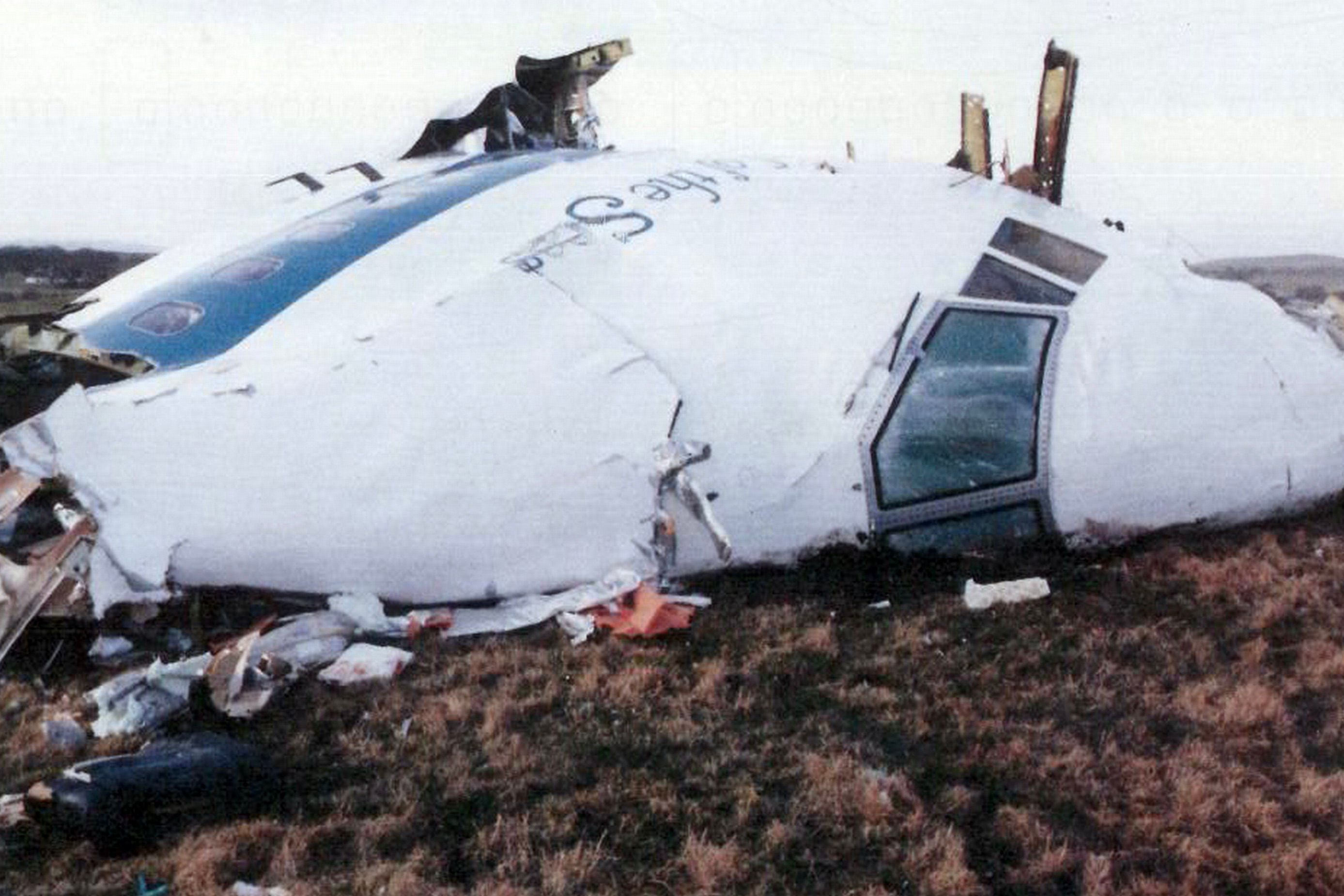
Pan Am Flight 103 Lockerbie - Remembering The Cabin Crew
Who were the flight attendants onboard the aircraft involved in the Lockerbie disaster?A 747 registered N752PA and named Clipper Fortune operating Pan Am flight 93, was en route from Amsterdam to New York in September 1970 when it was hijacked. The flight diverted to Beirut, where more gang members boarded the aircraft, and then the plane was flown to Jordan's Dawson's Field, where the plane was destroyed with explosives. This was the first hull loss of a Boeing 747.
In 1972, another Pan Am 747 was hijacked, this time en route from San Francisco to Ho Chi Minh City (Saigon at the time) on flight 841. However, the hijacker was overpowered and killed on landing, and the plane and passengers were safe.
Another 747 registered N754PA was also the subject of a terrorist attack. In 1982, while operating a service between Tokyo and Honolulu as flight 830, a bomb exploded, killing one person, injuring 16, and damaging the ceiling and overhead racks. The plane was repaired and went on to work for Air Afrique, Air France, and others before being scrapped, according to data from Planespotters.net.
Clipper Victor, N736PA, was not exactly the subject of a terrorist attack but was destroyed in relation to such events. Due to a bomb scare at Las Palmas Airport in March 1977, the aircraft and many others were diverted to Tenerife. When the airport reopened, planes began taking off for their destination, at which time a thick fog rolled in. As Pan Am 1736 was taxiing to the runway, a KLM 747-200 took off without clearance, colliding with the Pan Am flight and killing a total of 583 people. This is the deadliest accident in aviation history.
Pan Am’s Clipper Empress of the Seas, registered N656PA, was hijacked in 1986 while the aircraft was on the ground in Karachi and operating flight 73. Unfortunately, 20 people were killed, but the aircraft was not damaged. The plane went on to work for Evergreen International Airlines in 1991 but has now been scrapped.
A flight attendant, Neerja Bhanot, grew to fame after the incident when she was credited with saving the lives of many of the passengers. She became the youngest recipient of the Ashoka Chakra, India's highest award for bravery or courageous actions outside military combat.
The final terrorist incident is perhaps the most well-known; Pan Am flight 103 saw a Boeing 747 registered N739PA flying from Heathrow to JFK. Clipper Maid of the Seas was over Scotland when a pound of explosive in the cargo hold was detonated, triggering a series of events that led to the aircraft crashing on the village of Lockerbie in Dumfries and Galloway.
Unfortunately, 270 people died that day, including 11 who were on the ground in Lockerbie. This incident also became the deadliest terrorist attack in the United Kingdom and led to a host of investigations that implicated the likes of many, including Libya's infamous Muammar Gaddafi.
The 747SP
The 747SP was pretty much designed for Pan Am. Wanting to connect nonstop between the US and the Middle East and points on the East Coast of the US and Asia, Pan Am lobbied Boeing for a widebody capable of taking this route. Joined in their request was Iran Air, who wanted to fly from Tehran to New York nonstop.
Boeing developed the short fuselage 747SP (the SP stands for Special Performance), but it wasn’t a big seller. Only 45 were ever built, 11 of which went to Pan Am. Although only a small fleet, the 747SP set two world records for the airline during the course of its ownership.
In the mid-1970s, the 747SP registered N533PA and named Clipper Liberty Bell, broke the round the world record, doing it in 46 hours and 50 seconds, with two stops to refuel en route.
To celebrate the airline's 50th anniversary in 1977, Pan Am decided to break a few more records. This time, the 747SP flight went transpolar, stopping in Cape Town and Auckland and completing the route in 54 hours, seven minutes, and 12 seconds, achieving no less than seven world records. The plane that took the route was named Clipper New Horizons but was later renamed Liberty Bell.
Every single one of the airlines' 747SPs was sold to United Airlines between February 9th and February 13th, 1986, in what looked to be a bulk deal after United also took over Pan Am's transpacific routes.
N540PA flew the Sultan of Brunei for some years, and then the Bahrain Royal Flight. It also worked for the Las Vegas Sands Corporation, operating as a luxury jet transporting executives and VIP guests of the corporation. This aircraft was damaged beyond repair after a hurricane struck the area where the aircraft was undergoing maintenance. One went on to become the Royal Flight for Oman in 1992, and that same plane ended up with NASA, although it no longer flies.
Another 747, N536PA, also ended up with NASA as their Stratospheric Observatory for Infrared Astronomy (SOFIA) and remained in service until its retirement in December 2022. You can see it in action here:
Liberty Bell / New Horizons, the world record-breaking 747SP, is most recently shown as being stored at Pinal Airpark in Arizona, under the ownership of a leasing company, and unlikely to ever fly again. All the rest were scrapped after working a while with United Airlines.
Where are they now?
With many of these airframes exceeding 40 years old, it’s no big surprise to hear that most have been scrapped. However, a few are being preserved for future generations to enjoy. Most of the ones that live on in service were converted to cargo aircraft and are some of the later Boeing 747s Pan Am received.
Evergreen International Airlines has its own aviation museum, the Evergreen Aviation & Space Museum, in Oregon. They have three of the former Pan Am 747s ready for display, including one painted as Air Force One for a display relating to presidential transportation.
However, our absolute favorite is N727PA, a 747-200, which has ended up in Sweden, of all places. Here, it is being kept spick and span as a functional hostel for travelers to the country, located on the fringes of Stockholm Airport (ARN).
You can sleep in the cockpit; you can eat breakfast on the upper deck. Heck, you can even sleep in the engines! Could this be the most ingenious use of a former 747 yet? Possibly.
Pan Am never lived on to order or fly later iterations of the Boeing 747, like the 747-400 and the 747-8I. However, it is synonymous with the Queen of the Skies and will be remembered as the airline that launched the icon as the 747 prepares to end production.
Do you have any memories of Pan Am's Boeing 747 aircraft? Let us know in the comment section.

